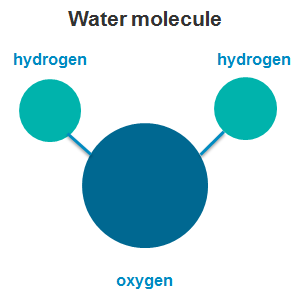A molecule is a group of two or more atoms that are chemically bonded together and are tightly held together by attractive force. It is the smallest particle in an element or compound that has the chemical properties of that element or compound. We can say that group of atoms constitute molecule. An atom is also subdivided into smaller sub particles like protons, neutrons and electrons. Atoms of the same element or of different element join to form molecules. Their lack of electrical charge is what distinguishes molecules from ions . A molecule may be homo nuclear, that is, it consists of atoms of one chemical element example oxygen (O2); or it may be hetero nuclear, a chemical compound composed of more than one element for example water (H2O). The number of atoms making a molecule is known as its atomicity.

Atomicity of some elements
- Argon Monoatomic
- Helium Monoatomic
- Oxygen Diatomic
- Hydrogen Diatomic
- Nitrogen Diatomic
- Chlorine Diatomic
- Phosphorus Tetra-atomic
- Sulphur Poly-atomic
Bonding:
Molecules are held together by bonding, either covalent bonding or ionic bonding. Most types of non-metal elements exist only as molecules in the environment. For example, hydrogen only exists as hydrogen molecule. A molecule of a compound is made up of two or more elements.
Covalent
A covalent bond is a type of chemical bond which involves the sharing of electron pairs between atoms. These electron pairs are termed bonding pairs or shared pairs, and the balance of attractive and repulsive forces between atoms, when they share electrons, is termed as covalent bonding.
Ionic
Ionic bond is nothing but a type of chemical bond which involves the electrostatic attraction between oppositely charged ions. It is the primary interaction occurring in ionic compounds. The ions are atoms that have lost one or more electrons which are termed cations and atoms that have gained one or more electrons termed anions. This type of transfer of electrons is termed electrovalence and not covalence. In the simple case, the cation is a metal atom and the anion is a non-metal atom, but these ions can be of a more complicated nature, e.g. molecular ions like NH4+ or SO42−. To sum up an ionic bond is the transfer of electrons from a metal to a non-metal for both atoms to obtain a full valence shell.
Molecular Size:
Most molecules are very tiny to be seen using a naked eye, although molecules of many polymers can reach macroscopic sizes, including biopolymers such as DNA. Molecules which are commonly used as building blocks for organic synthesis have a dimension of a few angstroms (Å) to several dozen Å, or around one billionth of a meter.
Molecular Formulas
Chemical formula: The molecular formula reflects the exact number of atoms that compose the molecule and so characterizes different molecules. However different isomers may have the same atomic composition while being different molecules. The molecular mass of a molecule can be calculated from the chemical formula.
Structural Formula:
A molecule may have same chemical formula but their structural formula might differ. So to represent it structural formula is most important especially in case of molecules having 3 dimensional structures.